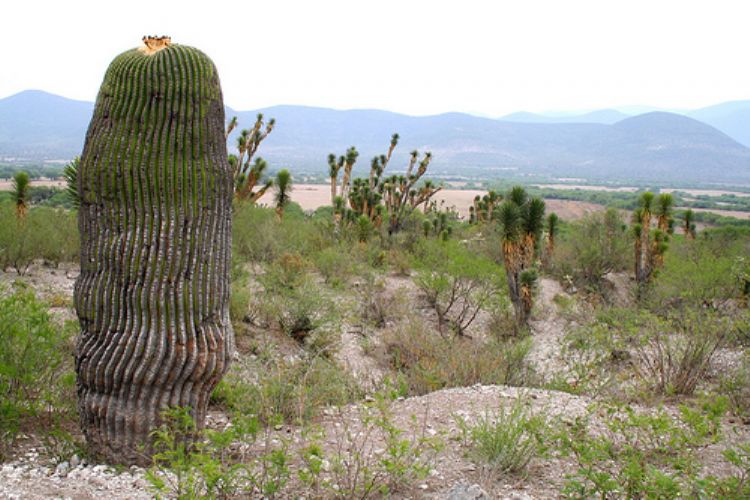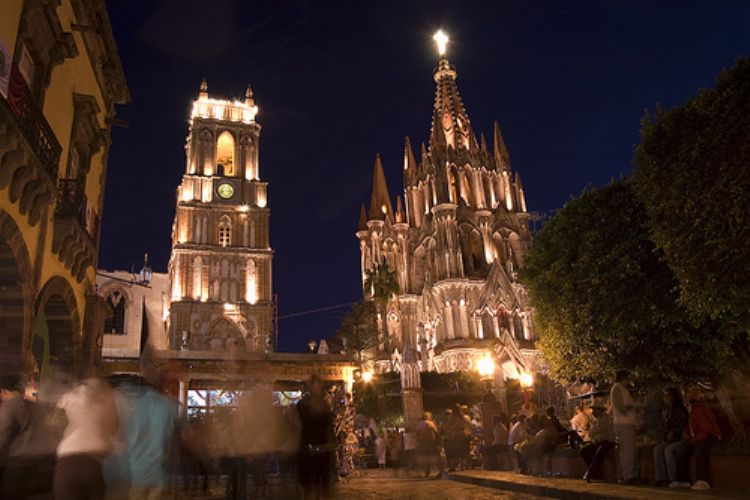
Mexican cuisine, rich in its variety and ingredients, shi...

Written story begins for the state of Tamaulipas as Americo Vespucio, in one of the letters he sent to Lorenzo de Me Medici, referred to this territory as the lands of Lariab, native word meaning lord or lords, which probably implies that it was how the local inhabitants, known as the Hustecas, called the newly arrived visitors, which in turn believed the term was referring to the land.
In addition to the original inhabitants of the Husteca mountains, the northern territories of the state were also occupied by nomadic tribes, still living hunter-gatherer lives. And just as is the case in other northern states in the country, very little traces of their existence were left behind. South of the Tropic of Cancer was the region chosen by sedentary groups who settled up on the high plateaus, the cultural origin of which is still subject to intense debate. When the Spaniards reached Tamaulipas territories, the southern part of the state was still inhabited by Olmecas, Nahoas, and Toltecas. The first European group reaching the area was led by Franciscan missionary friar Andres de Olmos, in charge of the process of evangelization throughout the local communities.
But it was in fact lieutenant Jose Escandon Helgueras, an expert in fighting and overpowering the chimichecas , mobile tribes of diverse cultural descent, who was assigned with the duties regarding the supervision of the colonized territories of the province of "Nueva Santander", a process which began with the founding of 14 villages. With colonists coming from the nearby localities of Nuevo Leon and Coahuila, many new Spanish settlements were established throughout the state, including Llera, Guemez, Nuevo Santander, Burgos, Camargo, Reynosa, San Fernando, Altamira, Santa Barbara, Real de los Infante, and Bustamante.
After a year away from the state, lieutenant Escandon returned and carried on with the founding of new villas, such as Aguayo, Revilla, Villa Escandon, Villa de Hoyos, Hidalgo, Santillana, Mier, and Villa de Cruillas. It is worth noting that the establishment of these future cities was possible only after overcoming countless attacks coming from the chimicheca tribes fiercely opposed to Spanish domination; in fact peace in the region was only accomplished in the XVIII century.
The first colonists were mostly illiterate and with very little knowledge of farming or cattle raising, and had absolutely no sense of what commerce was about. Brought from the nearby provinces, they worked the lands and defended them to the death against the constant attacks from the natives, which naturally meant life in this new settlements was rough and left very little room for leisure or indulgence. This is why cultural and religious celebrations were reduced to the few very special occasions.
As the provinces of the Spanish Crown on Mexican soil progress and develop, so does the desire of independence of the population of native, mixed-raced, or even Spanish descent, until one night, on the 15th October 1810, priest Miguel Hidalgo wakens the Mexican nation and calls for action with the now famous Grito de Dolores or "Cry of Dolores".
Even if the state does not play much of a part in that time of Mexican history, two locals did take part in the insurgent struggle towards independence, major Jose Maria Martinez, and civilian Xavier Mina .During the period known as La Reforma, of president Benito Juarez and extremist dictator Antonio Lopez de Santa Anna, the state's army under the command and leadership of locals Juan Jose de la Garza, Martin Zayas, Julian de la Cerda, and Acension Gomez, fought for the liberal ideals and for overthrow of the dictatorship. In the middle of the XIX century, the United States invade Mexican soil, partly through the state of Tamaulipas, which was the setting for numerous battles, like that of Santa Gertrudis, where republicans emerged victorious.

Mexican cuisine, rich in its variety and ingredients, shi...

Two products originate from oil exploitation, crude oil e...

The Aztec Empire, also known as Mexica, was formed by cer...

There are several dates that are considered important in ...
.jpg)
Without rivaling nature, human beingsâ intelligence, cr...

The Magical Towns of Mexico are cities that have witnesse...

He was born on the 30th of October 1873 at Hacienda el Ro...

Ever since the Middle Ages, pilgrimages were the way to r...

The state of Sinaloa is characterized by its vast areas o...

The history of migration of Mexican citizens to the Unite...

The figure of Antonio Lopez de Santa Anna has been very c...